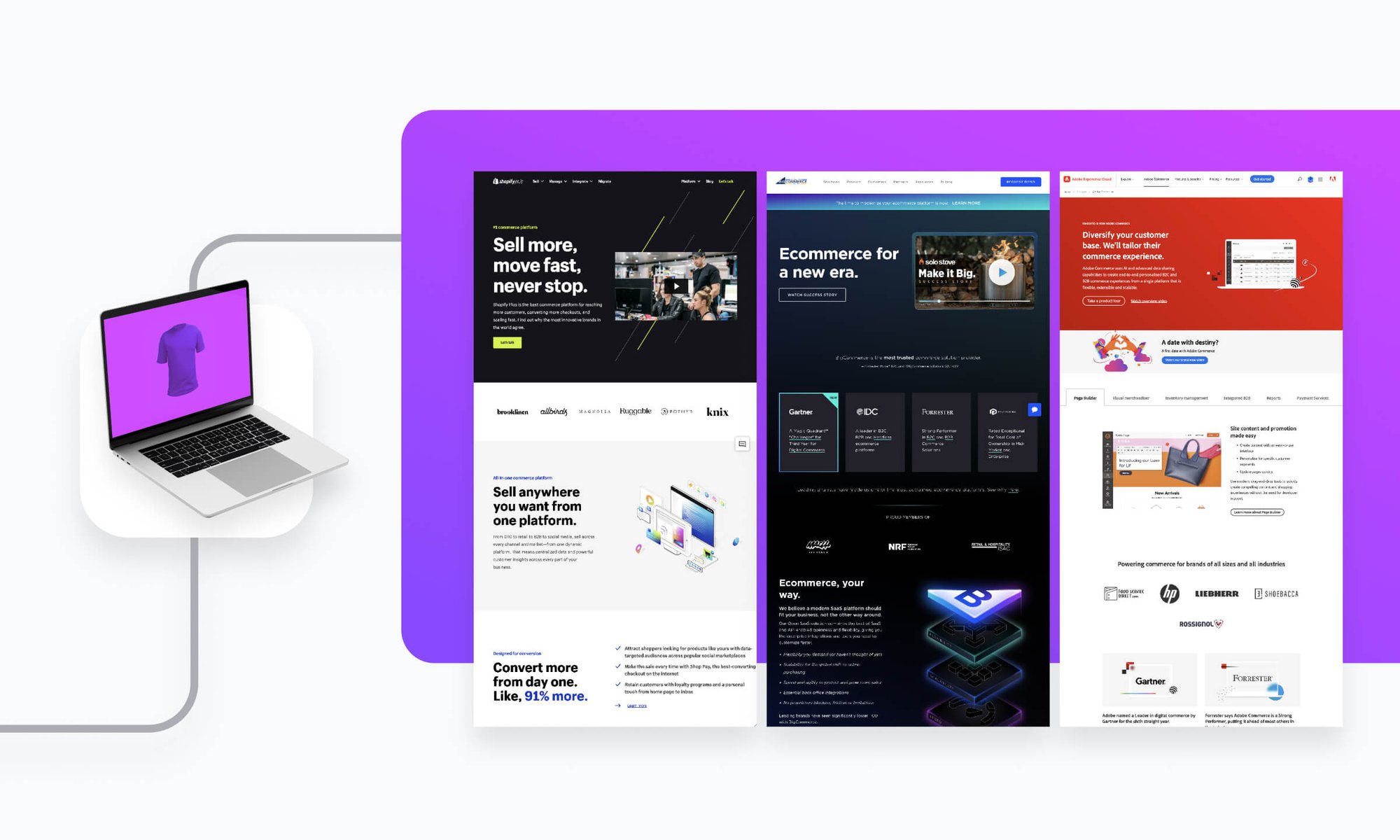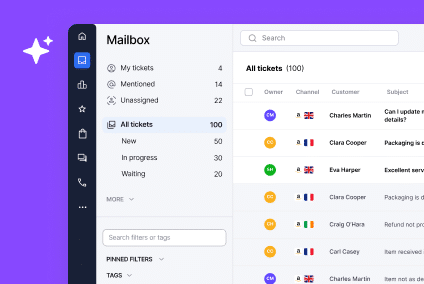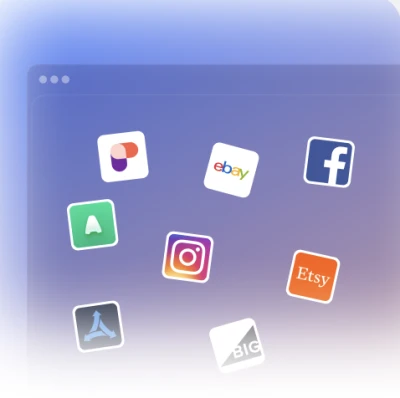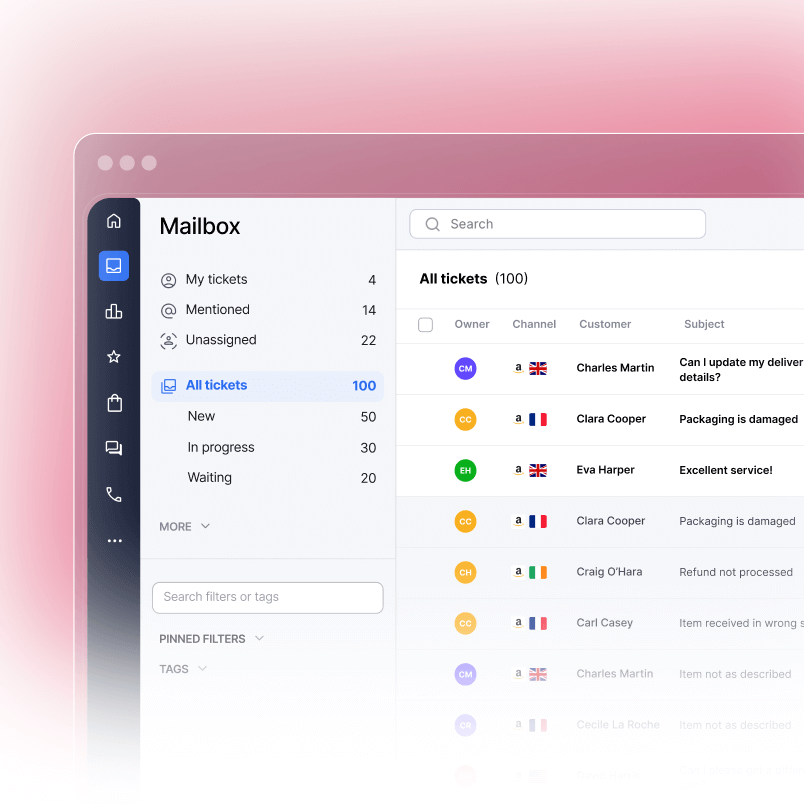Picture this: you’re running a thriving online store, but every time you want to make a simple design change, you hold your breath, hoping the entire checkout system doesn’t crash. Or maybe you’ve been dreaming of selling through voice assistants, social media, and mobile apps, but your current platform treats each channel like a separate universe. Sound familiar?
Welcome to the world of headless eCommerce solutions, where these frustrations become ancient history. As we dive into 2025, businesses are discovering that separating their storefront from their backend operations isn’t just a tech trend—it’s becoming essential for staying competitive in an increasingly complex digital landscape.
What Are Headless eCommerce Solutions?
A headless eCommerce platform is one that separates the front end of an eCommerce system from the back end. Put simply, you can change your product page and user interface without interfering with the back-end logic of your store, such as your order processing and shipping tools.
The front end presentation (such as templates and themes) is decoupled from the back end infrastructure that powers the store. This approach allows companies to use their front end technology of choice to provide a seamless user experience, while integrating their preferred back end eCommerce solution to manage functionality. It truly is the best of both worlds, with 92% of businesses claiming it’s easier to deliver a powerful digital experience through headless commerce.
Why Headless Commerce Platforms Are Taking Over in 2025

The shift toward headless commerce platforms isn’t happening by accident. 73% of all businesses are currently using headless website architecture, and the reasons are compelling:
Lightning-Fast Performance: Companies can explore new solutions to common challenges in online selling, staying competitive in the market. 80% of brands using headless commerce see higher revenue, with 24% sales growth. When your frontend isn’t weighed down by backend processing, pages load faster and customers convert better.
Ultimate Customization: Want your checkout process to match your brand perfectly? Need to integrate with your existing CRM? Headless eCommerce architecture gives you the freedom to build exactly what your business needs without compromise.
Omnichannel Excellence: 82% of respondents say headless architecture makes delivering a consistent content experience easier. Whether customers shop on your website, mobile app, or through voice commands, they get the same seamless experience.
Future-Proof Technology: As new devices and shopping channels emerge, API-driven commerce systems adapt quickly. Your business won’t be left behind when the next big technological shift happens.
Top Headless eCommerce Solutions for 2025
1. Shopify Plus (Hydrogen + Oxygen)
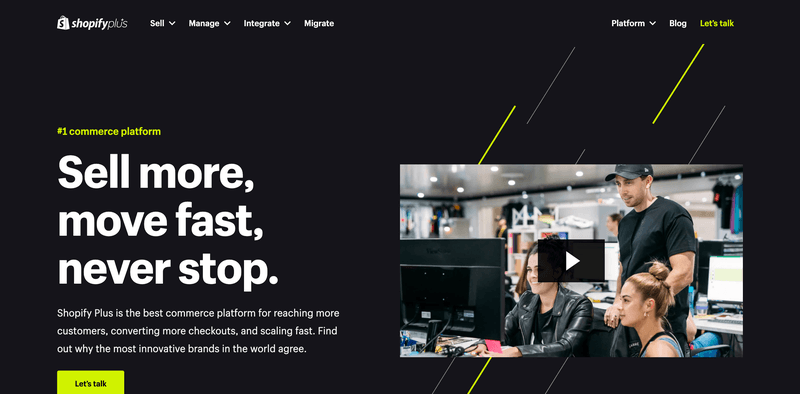
Best for: Established Shopify merchants ready for frontend freedom
Shopify’s headless offering combines Hydrogen (a React-based framework) with Oxygen (global hosting) to give you complete design control while keeping Shopify’s proven backend. Brands like Babylist, Ruggable, and Figs have used headless eCommerce Shopify in headless setups to create fast, content-rich, and performance-optimized storefronts.
Key Features:
- React-based custom storefront development
- Global CDN hosting through Oxygen
- Full access to Shopify’s ecosystem
- Seamless checkout and payment processing
Pricing: Starting at $2,000+ per month
2. BigCommerce
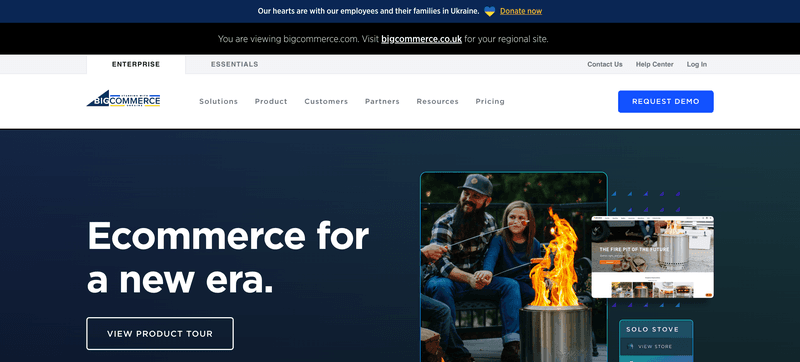
Best for: Mid-market businesses wanting headless flexibility without infrastructure headaches
BigCommerce delivers robust headless commerce capabilities through its API-first SaaS platform. Brands like Discount Electronics, Black Diamond, and Gorewear have adopted BigCommerce for headless builds to improve performance, enhance content delivery, and streamline integration across systems.
Key Features:
- REST and GraphQL APIs
- Pre-built integrations with popular tools
- 99.99% uptime guarantee
- No transaction fees
Pricing: Starting at $29 per month, with enterprise pricing available
3. Adobe Commerce (Magento)

Best for: Enterprise businesses needing deep customization and content personalization
Adobe Commerce takes a headless approach with extensive customization options and powerful omnichannel capabilities. Perfect for businesses with complex product catalogs and sophisticated customer segmentation needs.
Key Features:
- Advanced inventory management
- Built-in SEO optimization
- Multiple payment gateway support
- Comprehensive analytics and reporting
Pricing: Custom enterprise pricing
4. Salesforce Commerce Cloud
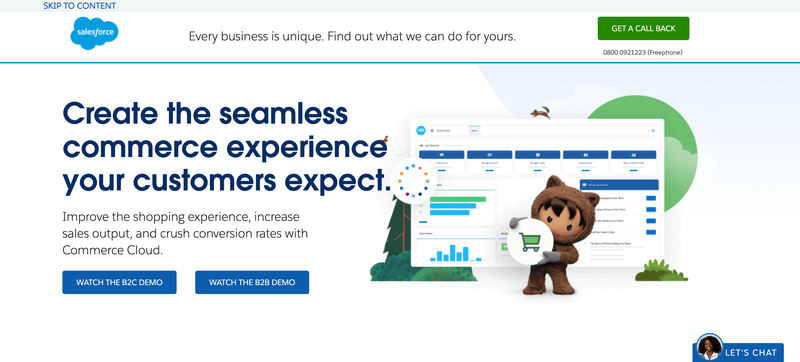
Best for: Large enterprises with existing Salesforce ecosystems
Created by the CRM giant, this scalable eCommerce platform offers configurable APIs and seamless integration with Salesforce’s content management system, making it ideal for businesses already using Salesforce tools.
Key Features:
- B2B and B2C commerce capabilities
- Advanced order management
- CRM integration
- AI-powered personalization
Pricing: Custom enterprise pricing
5. Commercetools
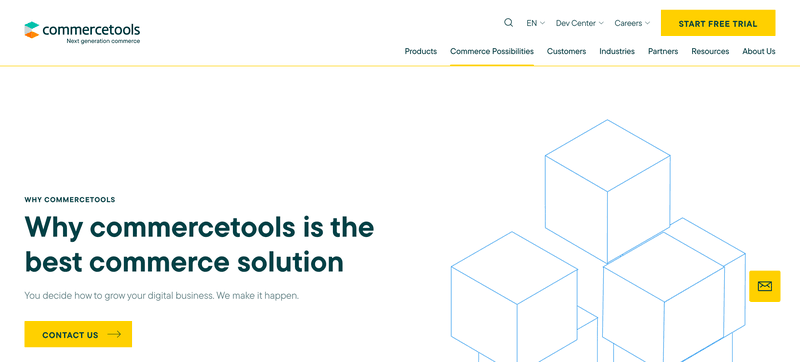
Best for: Businesses wanting pure API-first, composable commerce
This MACH-certified platform (Microservices, API-first, Cloud-native, Headless) is built specifically for composable commerce, allowing you to pick and choose best-of-breed tools for each function.
Key Features:
- Pure API-first architecture
- Multi-tenant cloud infrastructure
- Real-time data synchronization
- Extensive third-party integrations
Pricing: Custom pricing based on usage
Implementing Headless eCommerce: What You Need to Know
Technical Requirements
Moving to headless eCommerce architecture requires careful planning. Headless commerce requires skilled developers, with 64% of businesses facing API complexities. Costs are 30-50% higher, and 57% struggle with backend integrations and ongoing maintenance.
Development Team: You’ll need frontend developers familiar with modern frameworks like React, Vue.js, or Angular, plus backend developers who understand API integration.
Content Management: Consider pairing your headless commerce platform with a headless CMS like Strapi, Contentful, or Sanity for content management flexibility.
Progressive Web Apps (PWA): PWA eCommerce implementations can provide app-like experiences through web browsers, improving mobile performance and user engagement.
Essential reading: Hiring a Development Team for Headless eCommerce
Integration Considerations
eCommerce CMS Integration: Ensure your chosen platform supports seamless integration with your preferred content management system.
API Performance: Look for platforms offering both REST and GraphQL APIs for maximum flexibility and performance.
Third-Party Tools: Plan for integrations with your existing marketing automation, analytics, and customer service tools.
Shopify Plus vs BigCommerce: The Headless Showdown
When comparing these two popular options:
Shopify Plus excels for businesses already in the Shopify ecosystem, offering familiar backend management with Hydrogen’s powerful frontend capabilities. The learning curve is gentler for existing Shopify users.
BigCommerce provides more built-in features out of the box and doesn’t charge transaction fees, making it cost-effective for high-volume businesses. Their API coverage is comprehensive, and they offer excellent developer resources.
Both platforms support decoupled frontend/backend architectures effectively, so your choice often comes down to your current tech stack and specific business requirements.
Measuring Success with Headless Commerce
The benefits of switching to headless commerce platforms are measurable. Companies utilizing headless architectures have observed a 23% reduction in bounce rates, indicating improved user engagement. Additionally, 91% of shoppers prefer personalized experiences, and API-first solutions boost customer retention by 33%.
Key metrics to track after implementation include:
- Page load speeds
- Conversion rates across different channels
- Development velocity for new features
- Customer engagement metrics
- Time to market for new experiences
Is Headless Right for Your Business?
Headless eCommerce solutions aren’t for everyone. They work best for:
- Businesses with unique brand requirements
- Companies selling across multiple channels
- Organizations with development resources
- Brands prioritizing customer experience innovation
- Businesses planning significant growth
If you’re a small business with simple needs and limited technical resources, a traditional eCommerce platform might serve you better initially.
The Future of Headless Commerce
Over six in ten retail companies plan to migrate to headless commerce platforms by 2024, while over 20 percent already use them. The trend toward composable commerce—where businesses mix and match best-of-breed solutions—continues accelerating in 2025.
Emerging technologies like AI-powered personalization, voice commerce, and augmented reality shopping experiences integrate most seamlessly with headless architectures. By choosing a headless approach now, you’re positioning your business for whatever comes next.
Making Your Move to Headless
Ready to explore headless eCommerce solutions for your business? Start by:
- Auditing your current needs: What limitations are holding you back today?
- Assessing your technical resources: Do you have the development talent, or will you need to hire?
- Defining your timeline: Headless implementations take longer initially but pay dividends over time
- Choosing your platform: Consider the options we’ve outlined based on your business size and needs
The eCommerce landscape is evolving rapidly, and headless architecture is leading the charge. Providing outstanding customer experiences is more important than ever, as global eCommerce sales are expected to reach $7 trillion by 2025. Don’t let outdated technology hold your business back from capturing your share of that growth.
Whether you choose Shopify Plus for its ecosystem, BigCommerce for its value, or Adobe Commerce for enterprise features, the key is starting your headless journey with a clear vision of where you want to go. The future of eCommerce is flexible, fast, and headless—and 2025 is the perfect time to make your move.
